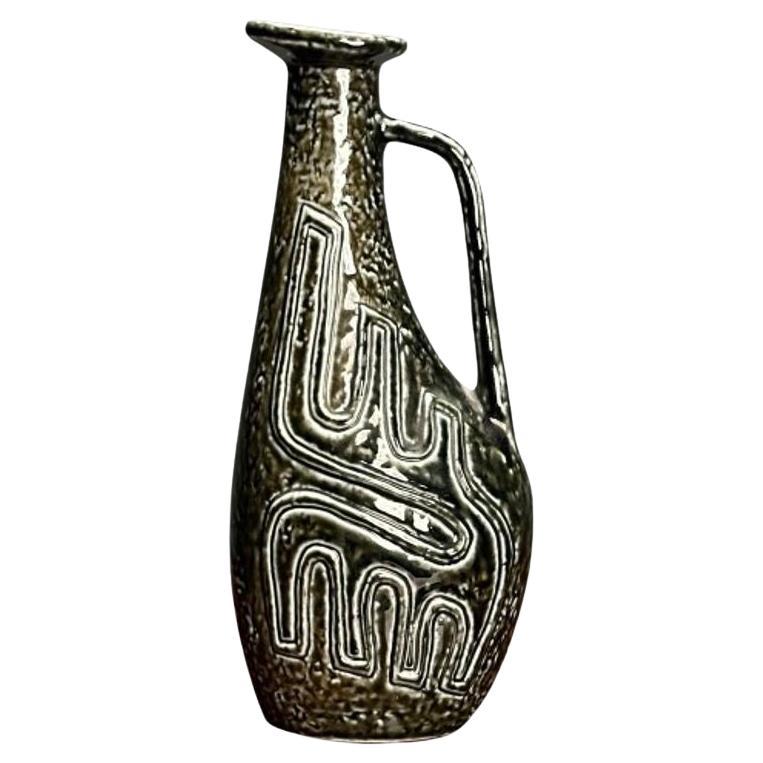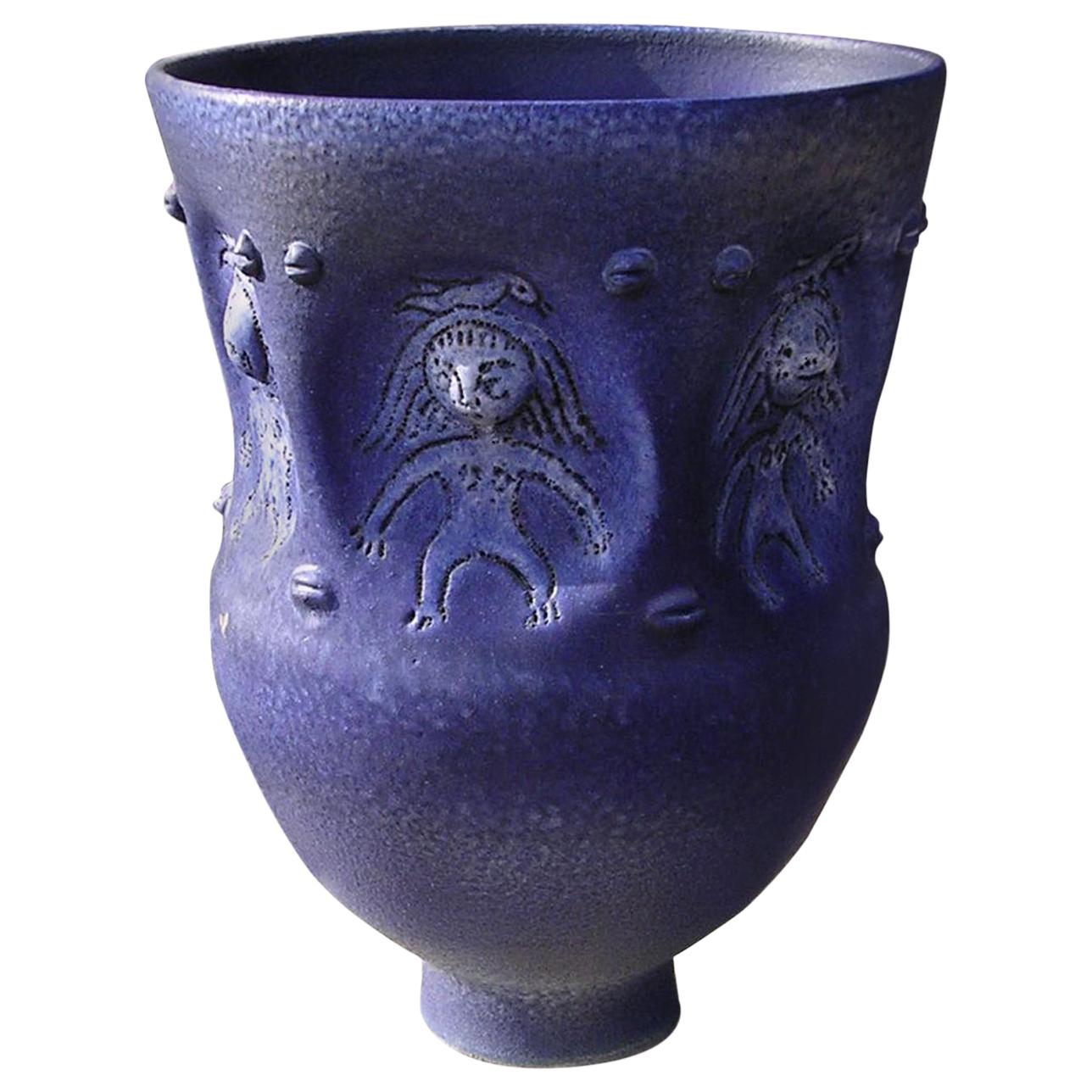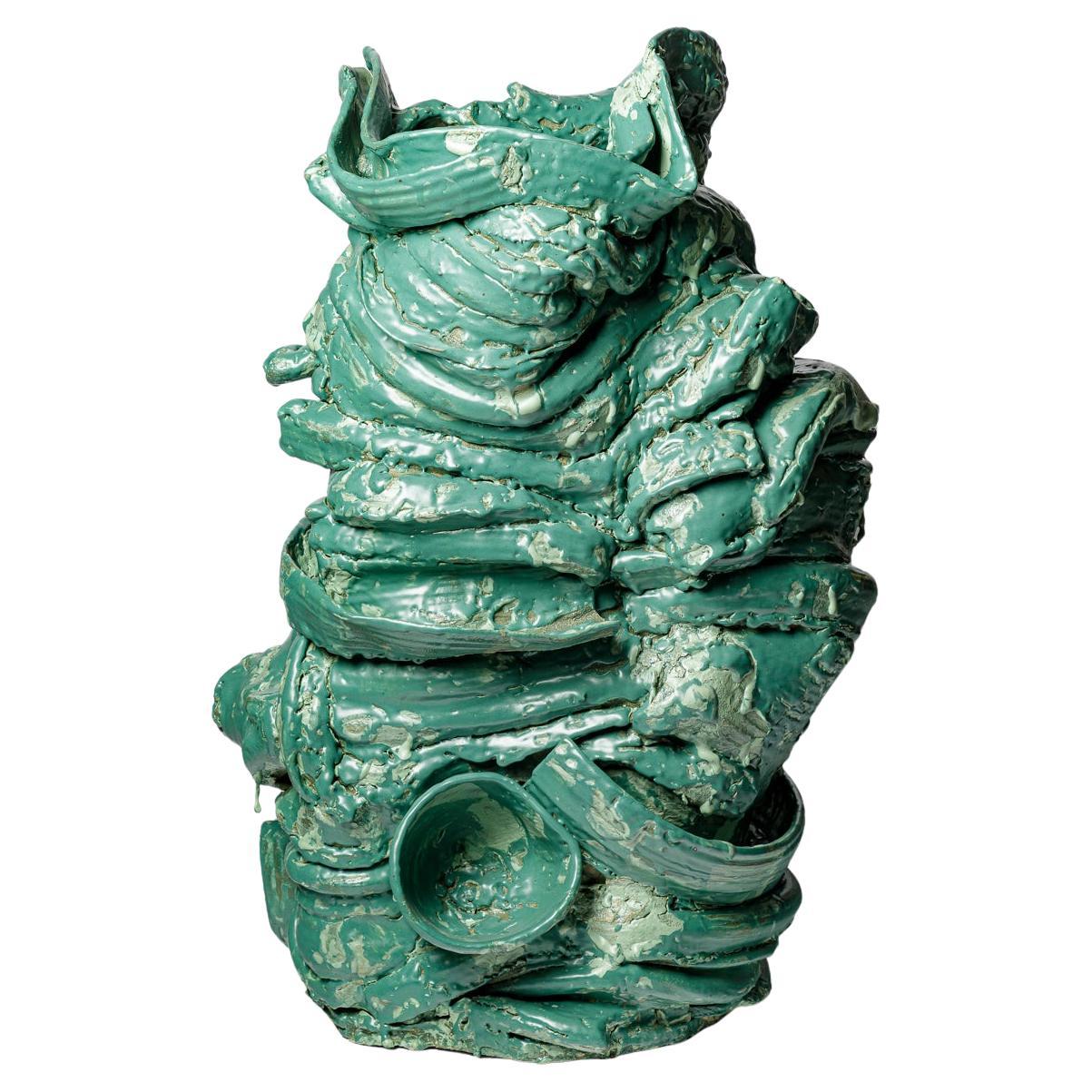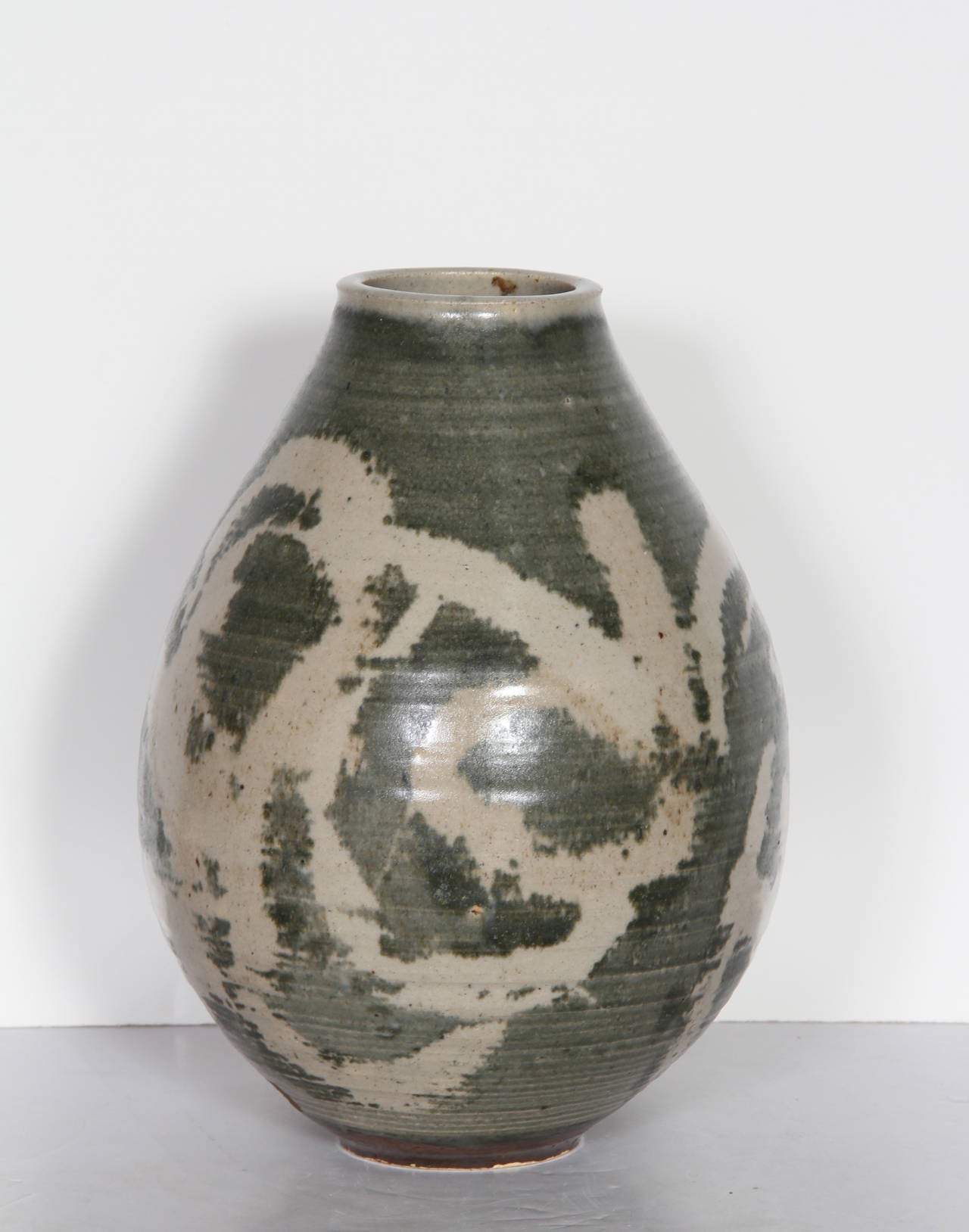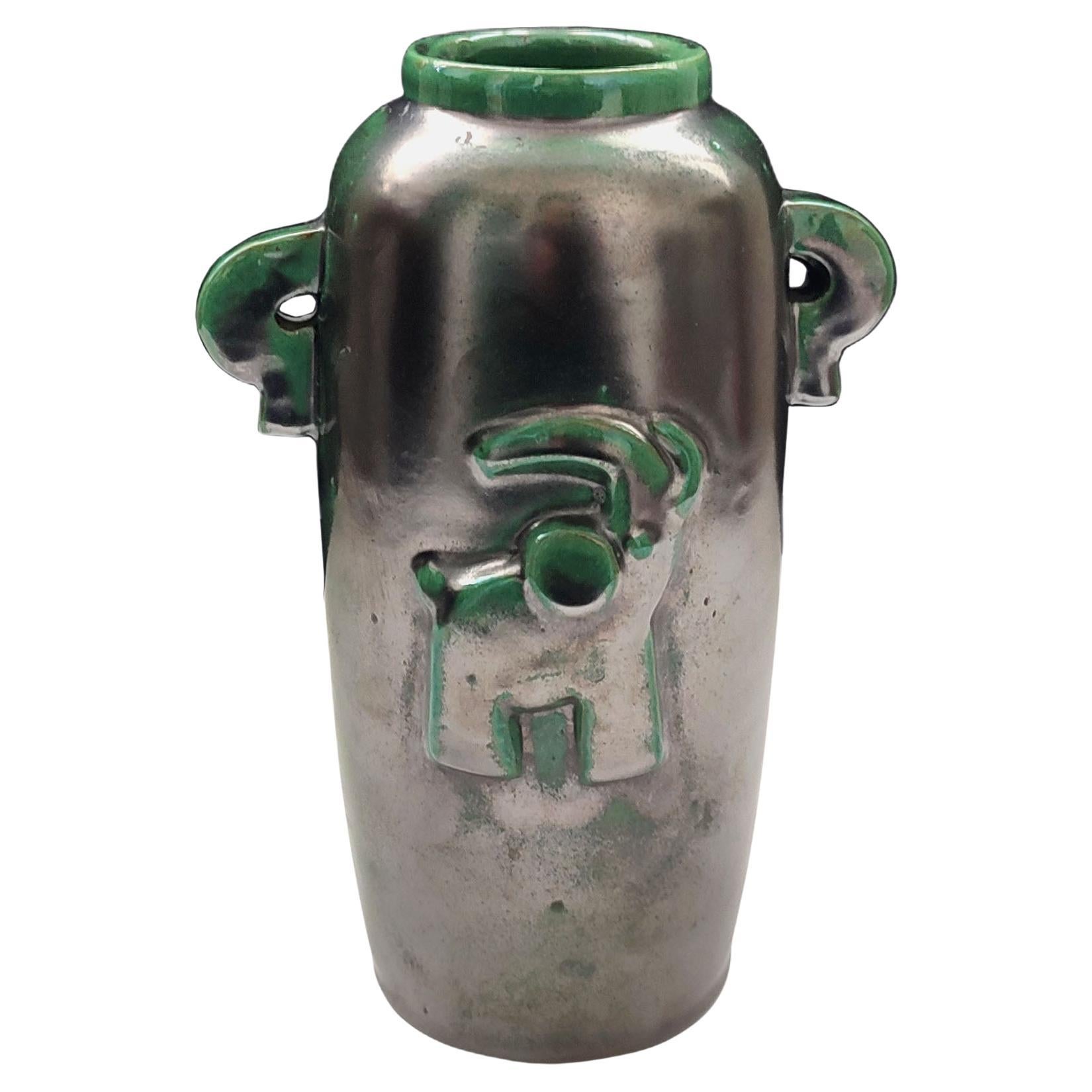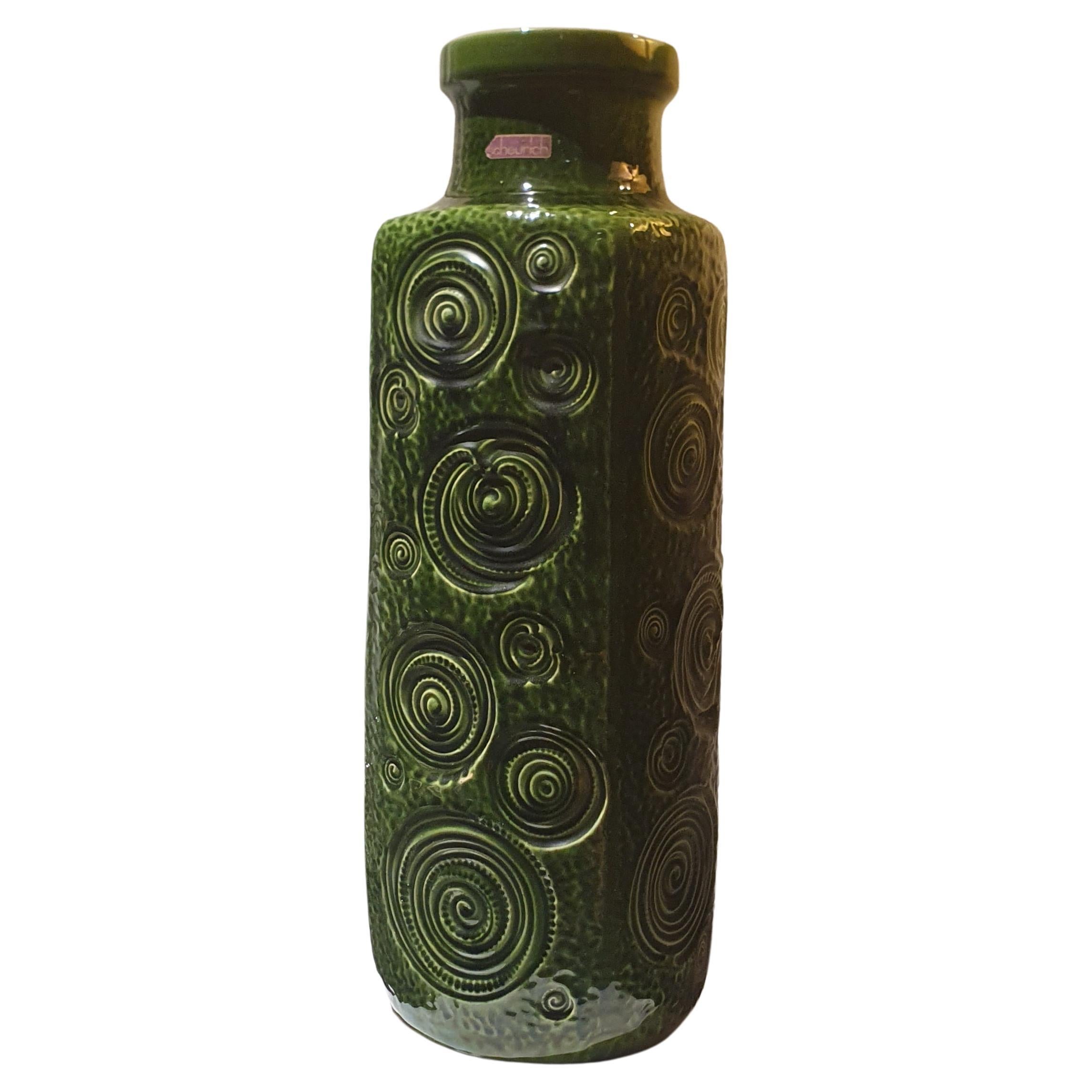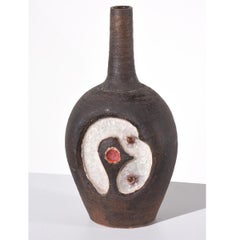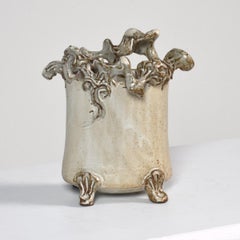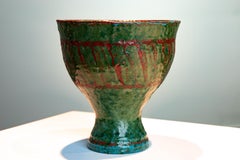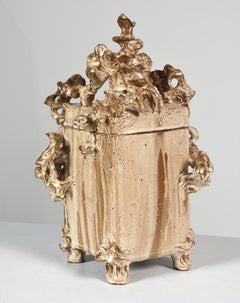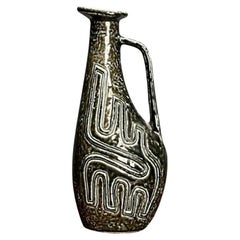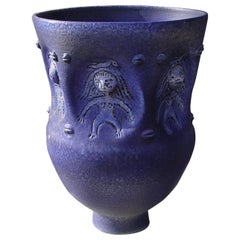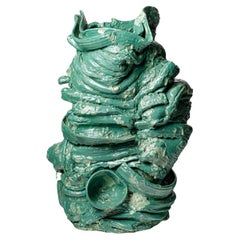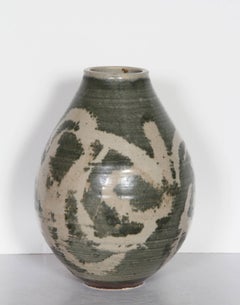Items Similar to "Untitled" Ceramic Vase with Etched Figures, Green Glaze, Signed on Bottom
Want more images or videos?
Request additional images or videos from the seller
1 of 8
Murray Douglas"Untitled" Ceramic Vase with Etched Figures, Green Glaze, Signed on Bottom
$1,800
£1,396.06
€1,582.38
CA$2,576.11
A$2,814.93
CHF 1,459.35
MX$33,628.35
NOK 18,571.17
SEK 17,387.01
DKK 11,815.95
About the Item
SALE ONE WEEK ONLY
Douglas’s etched ceramic vase in a rich earthy green glaze expresses the Mid-Century Modern style of simplicity of lines, forms and color. Despite its formal shape and subdued color, upon closer inspection can be seen exciting activity between nude figures chasing each other - around and around no one caught and no one stopping adding a bit of humor to an already physically satisfying piece.
Murray Douglas lived in Detroit, Bloomfield Hills and Royal Oak before retiring and moving to California. He started his career as a ceramicist working as an assistant to Mary Chase Stratton at Pewabic Pottery located in Detroit, Michigan.
Professor Douglas began his professional career as an art teacher at Brookside School at Cranbrook in Bloomfield Hills, where he taught from 1936-1950 except for two years of Army service in Europe during World War II. After the war he taught part-time in Wayne State University’s art education department and was offered a full-time professorship in 1950. He later was named department chairman. Through the years he advised hundreds of graduate students who now teach art throughout Michigan while teaching ceramics and graduate seminars. He retired in 1980.
Retired WSU Professor Fred Attebury, who taught art education from 1968 to1994, quoted Douglas as often saying that Wayne State had earned its reputation as a fine teaching institution with great interest in its students. "Douglas continued this fine tradition," Attebury said.
Professor Douglas received a bachelor's degree from Wayne in 1936, a master's degree from Ohio State University in 1940 and a doctorate from Ohio State in 1956.
He was listed in Who's Who in America, exhibited his ceramics work nationally and received awards from the National Ceramics Show and the Michigan Craftsmen Show. He also received one of Wayne State's first Arts Achievement Awards in 1975.
He was active in the national and Michigan Art Education Associations,¬ Michigan Potters' Association and the American Association of University Professors.
- Creator:Murray Douglas (1916 - 1997, American)
- Dimensions:Height: 9 in (22.86 cm)Diameter: 6 in (15.24 cm)
- Medium:
- Movement & Style:
- Period:
- Condition:
- Gallery Location:Detroit, MI
- Reference Number:1stDibs: LU128618361972
About the Seller
5.0
Vetted Professional Seller
Every seller passes strict standards for authenticity and reliability
Established in 2014
1stDibs seller since 2019
110 sales on 1stDibs
Typical response time: 17 hours
- ShippingRetrieving quote...Shipping from: Detroit, MI
- Return Policy
More From This Seller
View AllAldo Londi Vase Abstract "Glass Fused Ceramic Vase"
Located in Detroit, MI
"Glass Fused Ceramic Vase" is vintage Mid-Century Modern. This handsome vase has an elongated neck with a white glass-fused inlay portion on the front body...
Category
Mid-20th Century American Modern More Art
Materials
Ceramic, Glass
"Stoneware Vessel" Cream Glaze with Organic Decorations, Signed
By Gawaine Dart
Located in Detroit, MI
The rich tones of the stoneware clay come through the soft creamy glaze that drips over the surface like melted vanilla ice cream over red devil cake. This beautifully rendered ceramic vessel is perched on little decorative feet that poke out of the body of the piece. Of particular interest and commanding presence are the decorative forms attached to the top and sides. They twisted shapes of bent organic growth and provide endless entertainment for the creative imagination.
American Post War and Contemporary Artist, Gawaine Dart...
Category
1980s More Art
Materials
Stoneware, Glaze
"Monumental Chalice" Rare Ceramic Turquoise Green Red Graphic Signed
Located in Detroit, MI
“Monumental Chalice” is a stunning rare monumental ceramic chalice by the world re-known Italian potter Guido Gambone. The shape is light and delicate with a comfortable weight. Turq...
Category
1950s Modern More Art
Materials
Ceramic, Glaze
"Ceramic Box with Lid" Stoneware Cream Glaze w/ Organic Attachments
By Gawaine Dart
Located in Detroit, MI
ONE WEEK ONLY SALE
The rich tones of the stoneware clay come through the soft creamy glaze that drips over the surface like melted vanilla ice cream over red devil cake. There are i...
Category
1980s More Art
Materials
Ceramic, Stoneware, Glaze
"THE MANTEL SERIES" John Glick Stoneware Objets d'Art Intimate Indoor/Outdoor
Located in Detroit, MI
SALE ONE WEEK ONLY
John Glick is well-known for his beautifully rendered functional pieces of art. His decorative pieces, especially his large pots, are breathtakingly powerful objects. Glick's creative genius, however, is most exquisitely shown in this unique grouping of objets d'art. The Wall Hanging has a lovely classical scroll shelf. The objets on the shelf include an apple and pear - both fruits frequently rendered by artists from the Dutch Masters to Cezanne because of their perfectly balanced shape and rich colors. In addition is a small Greek or Roman styled dish used as an oil lamp. The other three objets are mysterious twisted tube-like organic shapes. John Glick, at one of his richest, creative bests. The objets are of various sizes, movable and can be displayed as desired. The size given is the overall size of both pieces and the objets d'art.
"The works in John Glick’s “Mantel Series” are still life tableaux comprised of ordinary, yet intriguing objects that imply a history of people interacting with objects and each other over time. Imagine a lettr or poem from a loved one, once read, tucked among other fabourite things for safekeeping. Or a salty treasure carried in a dampened pocket and later deposited on a cottage shelf to dry, crackle and change. In essence, the mantels hold suggestive collections in which most people can find a part of themselves a link to a personal memory and a connection to a lost moment in time.
His body of work, The Mantel Series, was partially inspired by a memory of a salt box that hung near his grandmother’s kitchen wood stove. For Glick, the unassuming little box, with its pleasing enigmatic shape and wooden lid, conjured pleasant boyhood memories, nostalgia for home and hearth, and vivid awareness of history. Upon his wall-based mantels, the artist placed a well-honed repertoire of distinct objects, all deftly crafted of clay, that become characters in his unspoken drama, each form playing off the others in the ensemble.” Plum Tree Pottery...
Category
1990s American Modern Still-life Sculptures
Materials
Ceramic, Glaze
"Untitled Vase" Blown Glass, Pink & Blue, Speckled, Sparkling, Signed by Artist
By Charles Schneider
Located in Detroit, MI
This speckled and sparkling glass vase is an exemplary piece of the Art Nouveau period of France and was created by legendary glass-smith Charles Schneider. The pink and blue speckle...
Category
Early 1900s Art Nouveau More Art
Materials
Glass
You May Also Like
Gunnar Nylund, Swedish Mid-Century Modern, Green Vase, Glazed Stoneware, 1960s
By rorstrand studio, Gunnar Nylund
Located in Manhasset, NY
Gunnar Nylund, Swedish Mid-Century Modern, Green Vase, Glazed Stoneware, 1960s
Swedish ceramic vase, vessel, or jug designed by Gunnar Nylund for Rörstrand in Sweden circa 1960s.
G...
Category
Vintage 1960s Swedish Mid-Century Modern Vases
Materials
Ceramic, Stoneware
Edwin & Mary Scheier Large Ceramic Vase with Incised Figures, 1996
By Edwin and Mary Scheier
Located in Phoenix, AZ
Blue studio pottery vase in excellent condition with incised female figures, 1996.
Created by Edwin (1910-2008) and Mary (1908-2007) Scheier.
Sig...
Category
20th Century American Mid-Century Modern Vases
Materials
Clay
Large floor vase in green glazed ceramic by Patrick Crulis, 2024
By Patrick Crulis
Located in Saint-Ouen, FR
Green glazed stoneware large floor vase by Patrick Crulis.
2024. Unique piece.
H : 28.3 x 15.7 x 15.7 inches.
Approximate sizes.
Category
21st Century and Contemporary French Beaux Arts Ceramics
Materials
Ceramic
Glazed Green Ceramic Vase
Located in Long Island City, NY
Year: 1966
Medium: Glazed Ceramic Vase, dated on bottom
Size: 12 in. x 9 in. x 9 in. (30.48 cm x 22.86 cm x 22.86 cm)
Category
1960s Modern Still-life Sculptures
Materials
Ceramic, Glaze
HOLIDAY GIFT - Einar Luterkort, Vase, Glazed Earthenware Vase, Sweden, 1930s
By Einar Luterkort
Located in Bochum, NRW
A green and black luster, glazed earthenware vase designed by Einar Luterkort for Motala Lervarufabrik in the 1930s. Clean Art Deco desgn featuing a stylized elephant in relief on th...
Category
Vintage 1930s Swedish Art Deco Vases
Materials
Earthenware
Striking tall handmade ceramic vase by Scheurich with "fat lava" green glaze
By Scheurich Keramik
Located in London, GB
This is a tall striking four sided vase by the renowned modernist German ceramicist Schuerich in stunning "fat lava" bottle green glaze with deep 5mm carved circular patterns to all...
Category
Vintage 1970s German Modern Vases
Materials
Ceramic
More Ways To Browse
Signed Green Vase
Green Vase With Figures
Roma Vintage
Black White Landscape Photography
Black And White Paris Photo
Vintage Lithographs
Black And White Photography Ballet
Pop Art Lithograph
Original Travel Posters
Mark Gray
Large Scale Sculptures
Atelier Vintage Paris
Limited Edition Prints Framed
Vintage Op Art
Vintage Adult
1960s Black And White Photos
Ex Libris
Framed Giclee Prints
